With all the excitement surrounding the Bosch Reaxx Table Saw at World of Concrete earlier this year, their newest miter saw flew under the radar—but only just. The Bosch CM12SD was introduced as the latest 12″ miter saw following the Bosch GCM12SD (12″) and Bosch CM10GD (10″) axial glide models released in the past few years.
Those axial glide models were the smoothest gliding miter saws we’d ever seen. Even five years after its initial launch, I still haven’t used a smoother saw. We’re revisiting our original review with a new project to see if it’s still among the top miter saws in the industry. This is just a warm up though – we’ve got Bosch’s latest miter saw on the way as well.
Since I move around a lot on mostly residential construction projects, I have the Bosch GCM12SD set up on Bosch’s T4B Gravity Rise Miter Saw Stand. We used this stand with other Bosch miter saws and it’s awfully tough to beat. To put the saw through its paces and get an idea of its accuracy and features, I’ve got a cedar flooring project to work on. I’ll also be building some structures and targets for a defensive shooting course.
Trolling the forums, we’ve seen some comments about the accuracy of the saw. There has also been some skepticism about the axial glide design itself – specifically its ability to continue performing well after some time around saw dust and other jobsite debris. I’m going to take a closer look at those along with Bosch’s claim of outstanding dust collection.
First Impressions
My initial reaction when I pulled this axial glide beast out of the box was like a kid on Christmas morning. I was in complete awe of the design. The anything-but-traditional look and design of the glide system makes it look like some kind of transformer. I thought for sure if I pressed a button or turned a knob in the right sequence it would transform into Megatron.
Out of the box, the glide system was a little loose for me. With just a turn of an included Allen wrench mounted on the saw, I tightened it to my desired tension. The saw was a little heavy at 65 pounds, but I was also provided a Bosch T4B Gravity Rise portable miter saw stand. A note about weight and miter saws – they typically get lighter when less metal is used, reducing the durability or function, so I’m not complaining about the weight. Once I mounted the 12″ miter saw to the T4B it was a dream to transport. The Gravity Rise Stand was easy to assemble and a breeze to mount the Bosch GCM12SD to. I am very pleased with the setup.
The Bosch T4B Gravity Rise Miter Saw Stand
I work for a construction company that specializes in remodel and repair. That means we usually are only on a job for three days maximum. Transporting our tools easily is a must – and we have to fit them all in a 16 ft. box trailer. One thing I loved about the Bosch GCM12SD/T4B combination is how compact it is when collapsed. I’ve seen people lay an extension ladder across a pair of saw horses to create a miter saw stand. Not only is that heavy and time consuming to set up and move, but it’s certainly far from compact.
The combination of saw and stand is stable and easy to move through a yard thanks to its larger tires on the Bosch T4B stand. When you get to where you want to work, all you have to do is pull a handle and tilt the stand back towards you. It takes all of about thirty seconds to get the miter saw from rolling to ready for work. You save time, which in return saves money. There are stands out there that don’t have wheels. If you’re setting up at home or a longer term jobsite, great, go ahead and use them. If you’re a contractor constantly on the move, I wouldn’t even bother.
The Bosch T4B stand has adjustable length and riser supports. The risers are an excellent feature for the fact that if you set it up right, you do not have to hold the end of the board to make sure you have a true cut. I did find that one of the risers would bump against the frame when collapsing the unit. Placing the riser in a higher position at take down will help prevent this.
No one wants to make multiple trips lugging all of the equipment around the house when cleaning up at the end of the day. With the Bosch T4B Gravity Rise Miter Saw Stand, it isn’t nearly as much of a chore.
Putting the Bosch GCM12SD 12″ Axial Glide Miter Saw Stand to Work
The main benefits to having the axial glide system is smooth gliding and reduced space. The Bosch GCM12SD accomplished both of these beautifully with this design. Space is at a premium on most of our jobsites. Since we don’t have to plan for an extra 12″ to 18″ behind the saw, we have more space to work.
When using the Bosch 12″ Axial Glide Miter Saw, I was initially worried about the number of moving parts in the axial glide system. In my mind, more moving parts equals more things that could possibly break or get gunked up. However, I used it on several messy jobs and didn’t see any ill effect. The glide systems worked as well as the day I pulled it out of the box. Past experiences with other traditional miter saw slides left saw dust sticking to grease on the rails. After a while, you would have to fight the saw to push and pull. The Bosch miter saw has no exposed grease joints, so it doesn’t suffer from this problem.
I have read other user complaints noting that the joints caused the cut to be off due to increased lateral movement or blade wobble. I have not experienced any issues on any miter cuts. When making bevel cuts at 45 degrees though, I did notice some blade wobble. This is a common issue that I’ve experienced on all the 12″ miter saws I’ve used. I’m already used to moving to a compact miter saw to help counter this on trim work, so I’m not disappointed. When it comes to making the most accurate bevel cuts, you’ll want to be aware that the Bosch GCM12SD isn’t immune.
My first project while using the dust bag was to build target stands for a defensive shooting course. While cleaning up I thought to myself, “I know I cut more wood than this”. Yet there was virtually no saw dust in my work area. Then I checked the dust collection bag – it was full. Even after completing other projects, I have never seen a saw dust collecting system work as well as this design. Paired with Bosch’s VAC140A Dust Collector, this design rates near the top for dust collection.
My goal was to look more closely at some of the specific features and claims on this saw. When it comes to performance, I can’t say it any better than Clint did in his review. The 15 amp motor is smooth and powerful, even with the stock blade. While cutting through cedar flooring gives me a great perspective on the accuracy and features, it’s hardly a fair evaluation of the power this saw has. Be sure to check out Clint’s thoughts on the Bosch Axial Glide miter saw as well.
Bosch GCM12SD 12″ Miter Saw Specifications
- Motor: 120V, 15 amps
- No Load Speed: 3800 RPM
- Blade Size: 12″
- Bevel Capacity: 48 degrees left and right
- Bevel Stops: 0, 33.9, 45 degrees left and right
- Miter Capacity: 52 degrees left, 60 degrees right
- Miter Stops: 15, 22.5, 31.6, 45 degrees left and right, 60 degrees right
- Cross Cut Capacity: 4″ x 14″
- Vertical Cut Capacity: 6-1/2″
- Weight: 65 pounds
- Price: $599 (Acme Tools), $649 (Amazon)
Conclusions
The Bosch T48 Gravity Rise Miter Saw Stand is a great addition to the Bosch GCM12SD 12″ Axial Glide Miter Saw and I would recommend that you purchase them together. The time and frustration saved is well worth your investment. After everything is said and done, the performance and functionality of the Bosch GCM12SD miter saw and T48 stand combination is absolutely pro level. The transformer-like styling stands out from the competition in addition to being a superbly functional design by the Bosch team. I highly recommend the Bosch GCM12SD for all general construction, remodeling, and repair professionals.

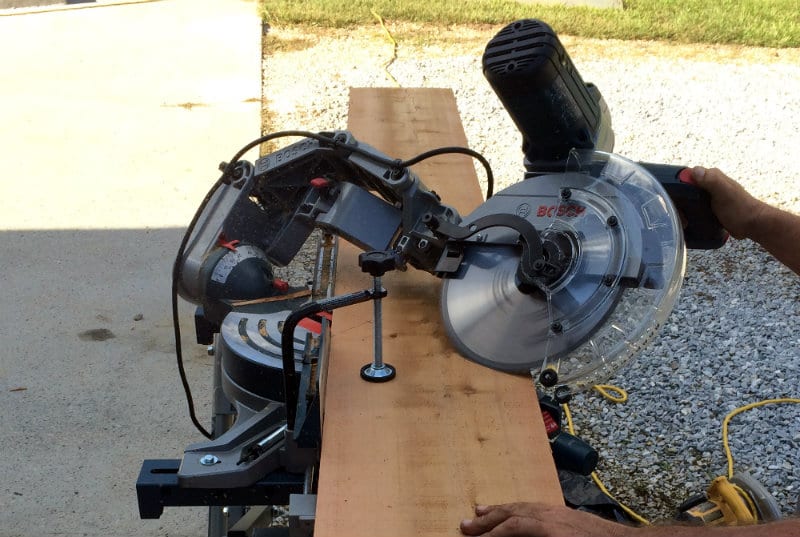
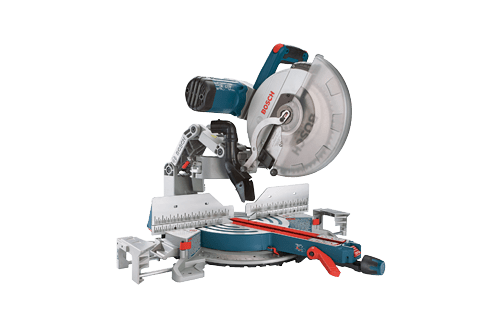
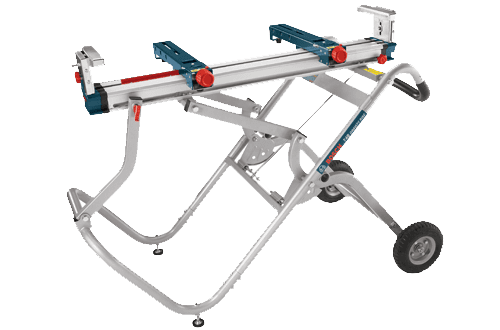
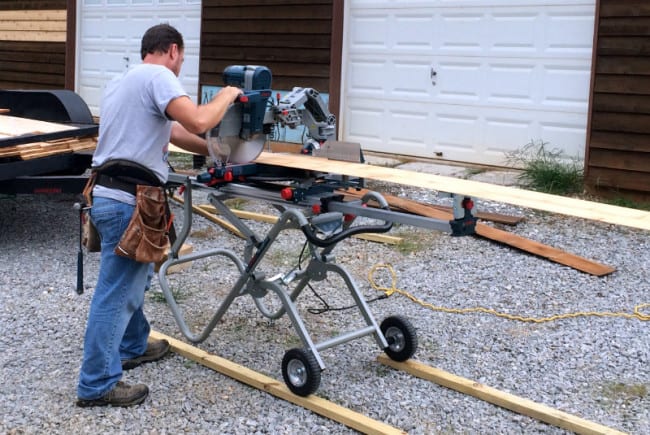
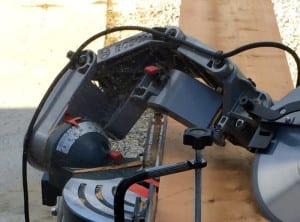
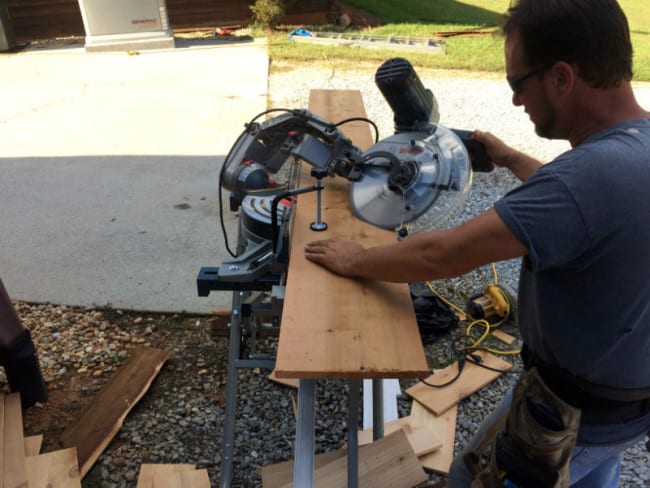



Why are there 3 different part numbers for this saw on this post? GCM12SD, CM12SD, CMD12SD.
The criticism of the GCM12SD isn’t the longevity of the Axial Glide mechanism, its the squareness of the arbor in relation to the Axial Glide motion which has been the major headache of this saw. You can only adjust squareness of the the glide path to the fence or you can adjust squareness of the the blade to the fence, but there is no provided mechanism to adjust squareness to the glide path. If the blade is not parallel to the glide path, which is the major problem occurring with owners and production of this saw, you will get burning… Read more »
A couple Youtube videos about the European version of this saw mention “2000 watt motor” which implies that the motor is 2.7 horsepower. However I thought that I saw “3 horsepower” mentioned on the page for this saw on Bosch’s USA website.